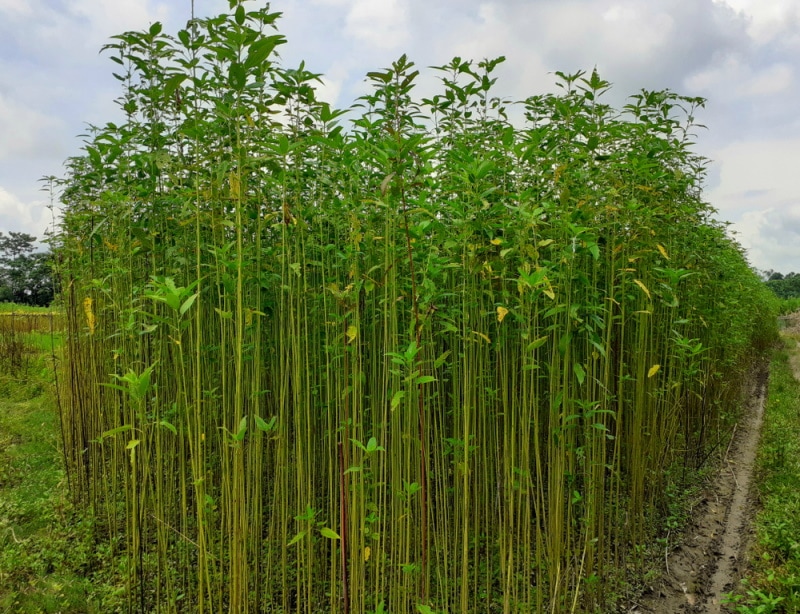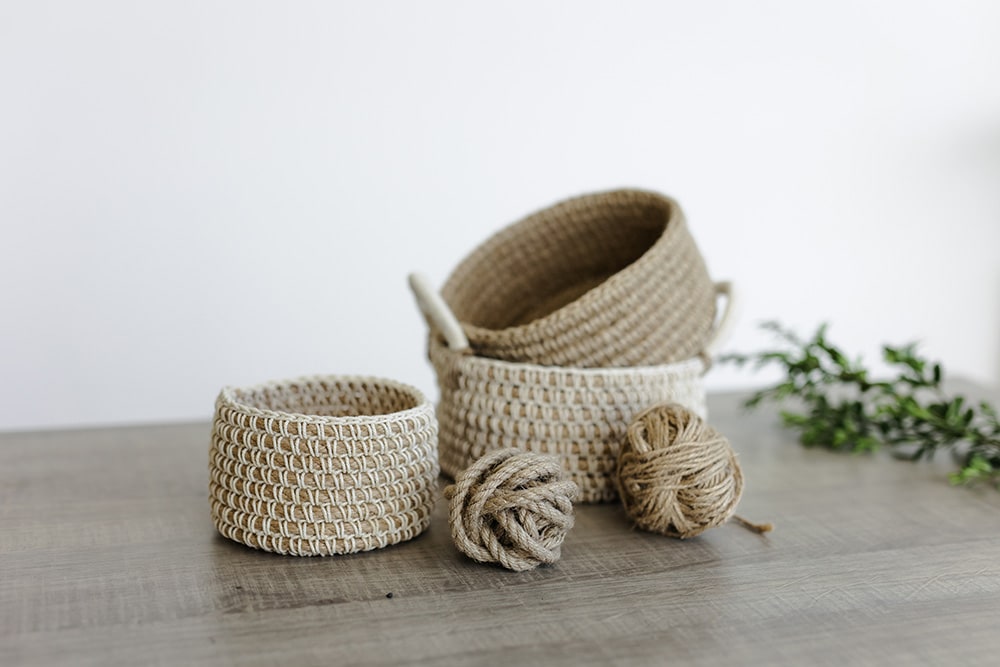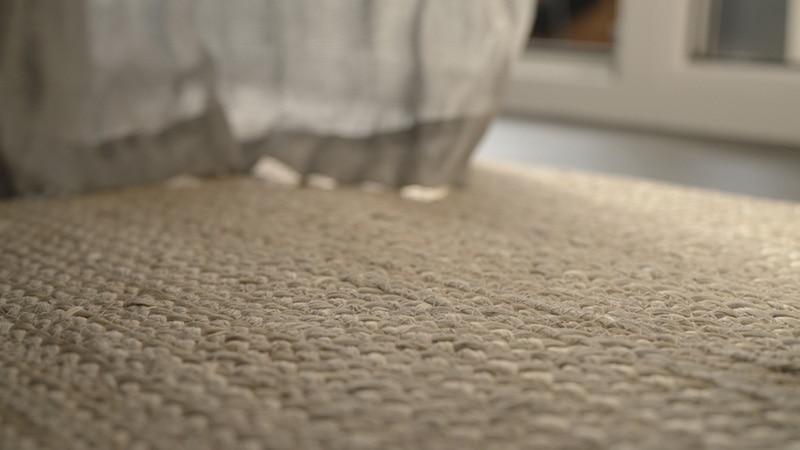What Is Jute? Types, Usage, Pros & Cons
-
Pete Ortiz
- Last updated:

Jute is a natural material that is made from the fibers of the jute plant. White jute and Tossa jute are the most commonly used jute plants for this purpose, but there are a lot of different natural varieties. It is the second most widely used plant fiber in the world after cotton, and the material, which needs similar growing conditions to rice, has been grown in India for more than 5,000 years.
Its rough texture means that the fabric is not suitable for clothing without processing and treatment. However, this same texture, combined with its strength and long fibers, makes it suitable for industrial and manufacturing purposes. As well as being used commercially, jute twine or string can be bought and used at home and is popular in crafting and DIY projects.
Read on to learn more about jute, how and where it is grown, and details of its properties and uses.
How Is It Grown?
Jute needs similar growing properties to rice. It requires a humidity level of around 80% and usually grows best in areas with monsoon seasons. It has been grown in India for 5,000 years and it became a cash crop that financed British colonialization efforts. Its growth in India saw the demise of Jute growth in Scotland, where it had been grown for centuries, with many Scottish producers moving to India for improved growing conditions and profits.
Although Jute production has declined since the inception and growth of synthetic materials, it is still grown extensively throughout India.
One of the benefits of cultivating the plant is that it grows quickly. Many plants are grown close together to encourage them to grow straight. They do not typically need pesticide or fertilizer and takes 6 months or less to grow to a height of up to 3 meters or more.
What Are the Different Types of Jute?

Although there are a lot of different species of Jute plants, a handful make up the majority that we use today:
- White Jute – White jute was once the primary type grown and used. White jute is white in color and while it was once the most common textile used in Bengal, it is less durable than other species so it has fallen out of favor.
- Tossa Jute – Tossa jute has become the most commonly grown species of jute because it is more durable and tougher than white jute. It also offers a higher yield at harvest time. It is light brown in color.
- Mesta Jute – Mesta jute is a hybrid of white and Tossa jute. It is still grown today, but not as commonly as Tossa jute.
- Jute Cuttings – When jute is processed and manufactured, the scraps and offcuts that are left behind are called jute cuttings. These are not as durable as the main fiber, but they can still find purpose in textiles and other industries.
Where Is It Used?
Jute is the second most widely used plant fiber after cotton, which shows that it has a lot of uses. Some of the ways it is used today include:
- Fabrics – Although jute is not as soft as cotton, it can be processed and worked to make it smoother. This, combined with its wide availability in certain regions of India, mean that it is a popular material in the production of clothing and fabrics. It is durable, cheap to grow, and it is flexible to work with, which still makes it a popular choice. It can be turned into hessian and burlap, which can also be used in fabrics, as well as for other purposes.
- Furniture – Jute fibers can be woven, glued, or otherwise attached to wooden and other frames. The strength of the fiber, as well as the fact that it doesn’t stretch, and is tough enough to resist wear and tear, make it a very beneficial material for the manufacture of different items of furniture.
- Cloth – Hessian and sackcloth can be made from jute fibers. These are then used in the production of sacks and other products and can be used across a wide range of different industries.
- Packaging and Commercial – Hessian fibers are cheap and readily available. They don’t stretch once tied or fastened and are durable. This makes jute a good choice as a packaging material. As well as hessian sacks, the twine used to tie off packaging can also be made from jute.
- DIY and Crafts – Another popular use of jute is in DIY and craftwork. Jute fibers are natural and they have a rough, textured look. This makes them popular in everything from upcycling furniture to creating decorations and other items for the home. The material is commonly used in items like cat trees and scratch posts.

Advantages of Jute
- Biodegradable and compostable – Jute is both biodegradable and compostable. This is not only beneficial when disposing of used jute products, but it makes it a useful material as pots for young trees. The pots can be planted and will degrade naturally over time.
- Grows naturally – There is little to no need for fertilizer and pesticides when growing jute, unlike in cotton growth. This makes it better for the local environment and can also help reduce the cost of cultivation.
- Matures quickly – From seed to harvest, jute takes less than six months to grow to several meters high. There is no need to wait a full year or several years before the plant is ready for use.
- High yield – This fast growth, as well as the thickness of the jute plant fibers, means that farmers get a large yield from a relatively small area.
- Strong fibers – Jute fibers are strong. They do not tend to stretch, either, and despite this strength, the material is flexible which means it can be used for a variety of purposes.
Disadvantages of Jute
- Creases readily – Although jute is not used to make clothing as much as it once was, it is still used in areas of India and its popularity is increasing across the globe once more, as people look for more sustainable, environmentally friendly alternatives. However, jute, whether in its natural form or when processed as burlap or hessian, creases easily and the creases are difficult to remove.
- Discolors in the sun – When left in the sun, jute discolors easily. White and off-white jute yellows, which means that jute furniture can quickly appear aged if exposed to direct sunlight for long periods.
- Loses strength when wet – Jute is a strong fiber, but it loses its strength when wet. The material can stretch in these conditions, and the fibers lose some of their strength which makes the material more likely to snap or fray.
Frequently Asked Questions (FAQs)
What country produces the most jute?

India produces approximately half of the world’s raw jute and around 40% of the world’s jute goods. Other countries that grow a significant amount of the natural material are Bangladesh, China, and Thailand.
What is burlap?
Burlap is a type of material, commonly used as sacking material. It is made from jute but this may be combined with the fibers of other plants and vegetables.
What is hessian?
Hessian is another name for burlap. The material is typically known as burlap in the U.S. and Canada, crocus in the Caribbean, and hessian in the rest of the world.
How long does jute take to decompose?
One of the benefits of jute is that it is biodegradable, and it takes between one and two years to decompose when in compost or other ideal conditions.
Conclusion
Jute is the second most commonly grown plant-based fiber used for commercial and industrial purposes. It is commonly used in packaging but is also used in textiles and clothing. It can be used to make furniture, processed into burlap, and used to make sacking. It is considered beneficial because the plant grows in six months or less, has a high yield, and its fibers are strong and flexible. Approximately half of the world’s jute is produced in India with other important growing countries including Bangladesh, China, and Thailand.
See also: 23 DIY Clever Jute Rope Craft Ideas You Can Make Today
- https://gojute.co.uk/2016/05/about-jute/
- https://sewport.com/fabrics-directory/jute-fabric
- https://www.britannica.com/plant/jute-plant
- https://blog.treasurie.com/what-is-jute/
- https://sewport.com/fabrics-directory/jute-fabric
- https://livejuniper.com/the-beauty-of-jute-furniture/
- https://textilelearner.net/uses-of-jute-application-of-jute-products/
- https://knowledgetextile.wordpress.com/more/advantages-disadvantages/jute-advantages-and-disadvantages/
- http://www.worldjute.com/faq/faq_1.html#producing%20countries
- https://en.wikipedia.org/wiki/Hessian_fabric
Featured Image Credit: CMYK MAKER, Shutterstock
Contents



